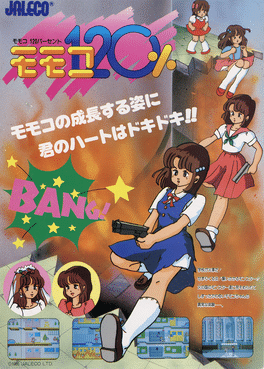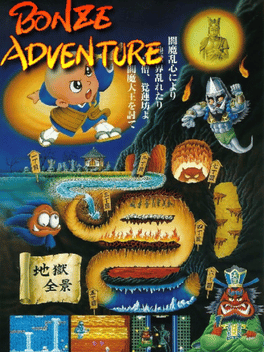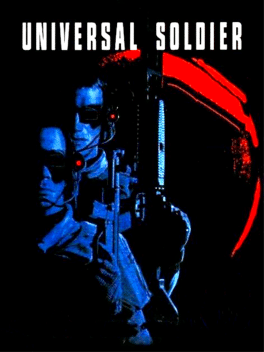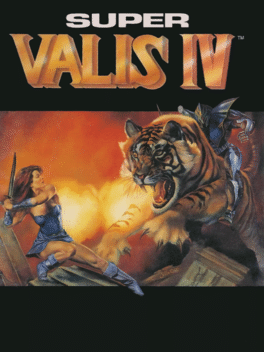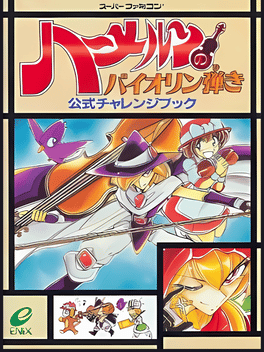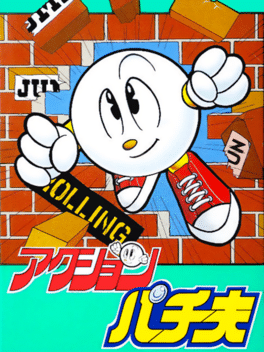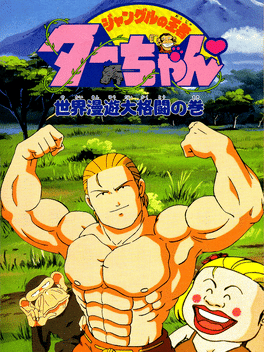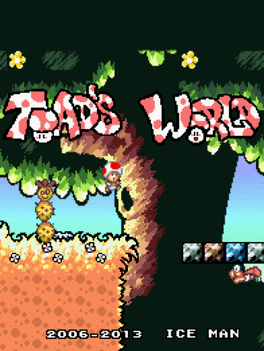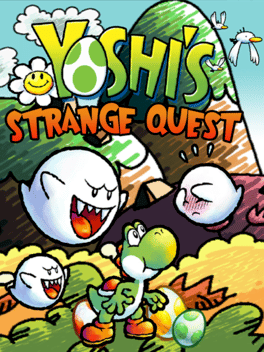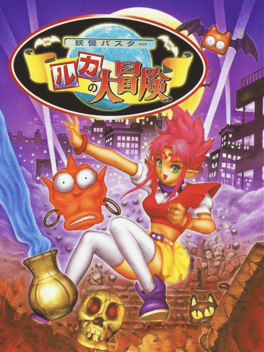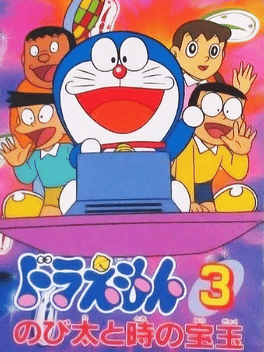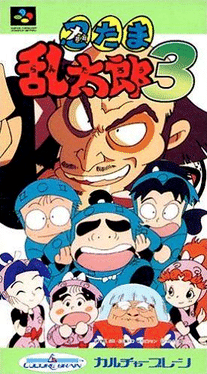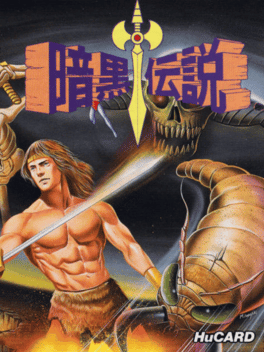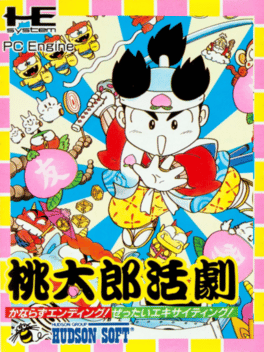Most Popular Playstation 2 Games - Page 290
-
Momoko 120%
1986
Momoko 120%
1986
This platform game features Momoko, a young Japanese girl who ages by several years each time the player reaches the next level. The goal for each level is to quickly climb several floors by escalator, ladder, or trampoline in the building she is in before the fire that is below her reaches her. These level settings start out from grade school settings to office type buildings. While jumping over obstacles, she must shoot various alien-like enemies that come after her on each floor. She can upgrade her weapon by destroying certain enemies as well as entering special hidden doorways which feature minigames which require you to jump obstacles. These doorways can also be used as a short-cut, and sometimes they are mandatory to be used in order to climb to the next floor. When Momoko reaches the top floor of a level, she must jump onto a small blimp flying above her to beat the level. Momoko begins as a four-year-old and ages through five levels. The final level is a bonus chance in which she is a twenty-year-old bride -
Bonze Adventure
1988
Bonze Adventure
1988
The player controls a Buddhist monk, Bonze Kackremboh. His weapons are Buddhist prayer beads, called "mala" beads, which can be powered up until they become almost as large as the player. The monk battles snakes, giant eyeballs, ghosts and other enemy creatures. -
Universal Soldier
1993
Universal Soldier
1993
Based on the major motion picture, this awesome action adventure takes you from the steaming shell-pocked jungles of Southeast Asia to laser-seared battlefields at home. You are a perfectly engineered Universal Soldier with extraordinary skills and powers - locked in mortal combat against your old Vietnam foe, the villainous Sergeant Scott. You are both "Ultimate Fighting Machines", but only one of you can survive! -Are you strong enough to conquer ten incredible locations? -Your arsenal includes Triple Beam Lasers, Land Mines and a special Chaos Weapon. -
Super Valis IV
1992
Super Valis IV
1992
Once upon a time, there was a prince named Gallagher. He was entrusted with a magical ring that granted him great powers. But he was too weak to control the power of the ring, and became possessed by it. The mad prince was sealed into a crystal, but many years later managed to break out, planning to wreak havoc on the Dream World and to conquer it! Yuko, the heroine of the three previous Valis games, is no longer a sacred Valis warrior - she has become a goddess. Lena, a young girl who wants to become a Valis warrior, is the new main character, who must prove to Yuko she is worthy to wield the sword of Valis, that will eventually stop the evil plans of Gallagher. Like the previous games in the series, this is an action platform game. You can fight enemies with melee weapons or use magic. In order to cast magic spells, you must gather special items while fighting off regular enemies. At the end of a level, a boss enemy battle awaits you. The game features cut scenes with animé-style graphics to advance the story. -
Hameln no Violin Hiki
1995
Hameln no Violin Hiki is a platform game based on the manga/anime series of the same name. You play the role of Hamel who is an adventurer with a violin as his trusty weapon. Hamel and his mascot Oboe arrives at Staccato, a small town attacked by monsters, and drives them away with his power. Impressed, a cute little girl named Flute decides to go with Hamel in order to find and destroy the evil power behind the attacks. -
Jelly Boy 2
Smart Ball 2 is an action game, developed by Game Freak and published by Sony Music Entertainment, which was cancelled before it was released. -
Action Pachio
1993
Action Pachio
1993
The player takes control of a white Pachio and tries to make his way through all the side-scrolling levels. In between each level is a cut scene that updates the story for the player. Players can collect coins in the game; collecting 100 of them results in an extra life. They are also given a life bar with three different colors (symbolizing how "healthy" the character is), a time limit, and a relatively generic score indicator that goes up to 99 million points. -
Jungle no Ouja Tar-chan: Sekai Manyu Dai Kakutou no Maki
1994
Ta-chan is the king of jungle. He was abandoned in savanna, and has been raised by a chimpanzee, Etekichi. He has a dearest wife, Jane who used to be a top model in New York, but now she looks…Anyway, to protect animals from poachers, Ta-chan is fighting against them with his disciple, Pedro, and a master of Chinese martial arts, Ryo. -
Toad's World
2013
Toad's World
2013
This is a full Super Mario World hack that does not only have a new player but new graphics, levels, gimmicks as well as music and sprites. Basically this is not Super Mario World anymore but feels like another game. -
Yoshi's Strange Quest
2015
This is the sequel to Mario's Strange Quest and a mod of Super Mario World. -
Super Mario Bros.: The Lost Levels Deluxe
2005
Super Mario Bros. The Lost Levels Deluxe is a rom hack of Super Mario World. The game is a remake of all 52 levels of Super Mario Bros: The Lost Levels with Super Mario Bros. 3 style graphics. There are new over worlds, some additional custom levels, changed tunes and more. -
Yokai Buster: Ruka no Daibouken
1995
Game developers Sting' were contracted by the publishing comglomerate Kadokawa Shoten for a tie-in game for their gaming magazine Marukatsu Super Famicom, which had recently just started pushing a new mascot named Ruka (with an accompanying mini manga in each issue) to try and help boost sales of the magazine. Rather than create a new game from scratch, Sting opted to re-brand the already existing "The Jetsons: Invasion of the Planet Pirates" game they had released the year before, which had not been released in Japan. The gameplay and level design between the two games is ultimately the same, though the story, sprites, and artwork were completely redone, as well as music. -
Doraemon 3: Nobita to Toki no Hougyoku
1994
Doraemon 3: Nobita to Toki no Hougyoku is an Action game, developed by AIM and published by Epoch, which was released in Japan in 1994. -
Nintama Rantarou 2
1996
Nintama Rantarou 2
1996
Nintama Rantarou 2 is an Action game, published by Culture Brain, which was released in Japan in 1996. It also had a view-limited Downloadable game release for the Satellaview that was broadcast in at least 2 runs between March 29, 1998 and November 28, 1998. -
Nintama Rantarou 3
1997
Nintama Rantarou 3
1997
Nintama Rantarou 3 is an Action game, published by Culture Brain, which was released in Japan in 1997. -
Ankoku Densetsu
1990
Ankoku Densetsu
1990
Ankoku Densetsu ('Dark Legend') is widely considered to be the follow-up to the PC Engine classic Makyo Densetsu (1988) ('The Legendary Axe'). -
Makai Prince Dorabochan
1990
A side-scrolling 2D platformer featuring a magical demon prince. As well as his own magic, he can also depend on his loyal Moai servants to make bridges. The predecessor of The Twisted Tales of Spike McFang. Makai Prince Dorabocchan ("Demon Prince Dorabo") is a 2D platformer for the PC Engine. The player controls the titular character who is on a quest to rescue his master and defeat the evil demons that have invaded the kingdom. As well as his own magical powers, he can be upgraded by finding suits of armor which boost his abilities as well as temporary power-ups that provide double-jumping, a syringe weapon that stuns enemies and cleats that allow him to jump on enemies to defeat them. If he finds a bat with a bell, he can summon his burly Moai guardians who use their stone bodies to create bridges that allow Dorabo to move forward or find secret areas. Dorabocchan would later appear in the top-down 1993 Super Nintendo action-adventure game Chou Makai Taisen! Dorabocchan, which was localized in the west as The -
Mizubaku Daibouken
1992
Mizubaku Daibouken
1992
This is a single player platform game that features Hipopo, a platypus (referred to as a hippo) who must fight his way through a large number of enemy-packed levels in search of his missing girlfriend - rescuing other platypuses along the way. Hipopo is armed with water bombs which can be thrown at enemies to soak and damage them. Once soaked, the enemies can then be kicked and destroyed completely. Enemies left unkicked however will dry out and recover after a short period of time. The level design presents moving platforms, collapsible floors, boats and water-wheels all making an appearance. Small plants also appear on certain levels which can be "watered", causing them to grow and creating new platforms. Appropriately enough for a game which features water as the main weapon, many of the enemies and the later levels have a fire thematic. He can also collect cakes and other items to gain more points. -
Momotaro Katsugeki
1990
Momotaro Katsugeki
1990
A platformer starring Hudson Soft's take on the famous Momotaro of Japanese folklore. The same concept would later be seen in the Momotaro Thunderbolt games for Game Boy. Momotaro Katsugeki ("Momotaro Action Movie") is a side-scrolling action-platformer from Hudson that uses their Momotaro character who is better known as the star of the Momotaro Dentetsu and Momotaro Densetsu series. It is a PC Engine exclusive and never saw international releases. Momotaro Katsugeki seems influenced by and plays similarly to Westone's Wonder Boy in Monster Land and the sequels that followed: the goal is to move across a set of 2D stages, and the player can talk to NPCs for hints and to purchase better equipment with the money they find. There is also a world map that links the various stages together. The concept of a 2D side-scrolling action game featuring Momotaro would be further explored by Hudson with the two Game Boy Momotaro Dengeki/Thunderbolt games. -
Ghouls 'n Ghosts
1989
